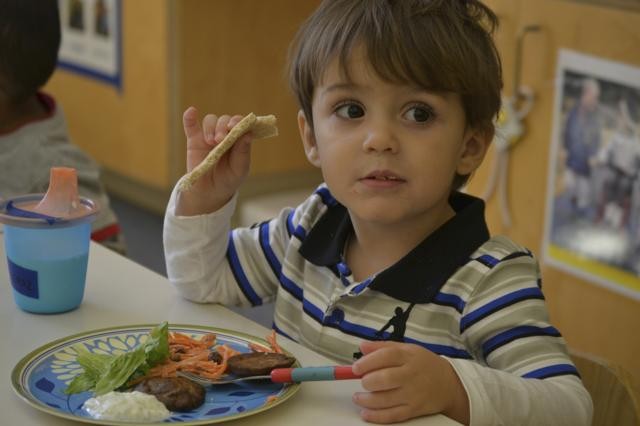More and more people are flocking to the Asheville area not only for the beautiful mountain views, but to experience the food culture we have created. Our restaurants offer something for every palate and are serving up everything from decadent culinary treats to healthy fare made with fresh, local and whole ingredients. But even in a foodie town as savvy as Asheville, navigating portion sizes can be a challenge.
Recently, I was out to dinner with some out-of-town family at a popular Italian restaurant. This particular establishment now offers two plates of pasta (for one order) rather than just one. This got me thinking, so I did a little research. Less than 10 percent of Italians are obese — compared to 27.3 percent of adults and 19.3 percent of children in North Carolina. Italians eat pasta, don’t they? As it turns out, many Italians eat pasta every day, just in much smaller quantities — usually about a cup’s worth (the size of a small fist). Italians also combine that with vegetables and salad. Additionally, restaurants in Italy don’t offer children’s menus as we do in the United States: They offer smaller portions of their regular menu.
Portion sizes in the United States are big, sometimes as much as four to five times bigger than recommended by the U.S. Department of Agriculture. Bagels are big. Muffins are big. Beverages are big. Food packages are big. Many restaurant servings are ginormous (to use a favorite expression of my daughter’s). We have lost perspective on what is a “normal” portion size.
The Center for Science in the Public Interest (CSPI) calls this “supersizing,” and it is not just happening at fast-food restaurants. It is the new “normal.” CSPI cites that a typical Italian restaurant serving of fettuccini Alfredo has as much saturated fat as three pints of butter-almond ice cream. A 5-ounce blueberry muffin — the size you would find in the grocery store or in a coffee shop — has the better part of 500 calories. An actual USDA-recommended 2-ounce serving size is less than half of that.
How do we make sure we are balancing the need for hungry, growing children to get enough to eat and the need to model proper portion sizes in order to establish healthy eating habits? It is hard enough for us as adults to maneuver through the parade of food messages (both good and bad) that are out there. But children rely on us to model and demonstrate things like proper portion size; variety in our food choices; a healthy balance of fruits, vegetables, proteins, grains; and, yes, the occasional treat. Portion sizes should often be way smaller than we think, and sizes for small children are significantly less than for adults. What can you do to encourage proper portion sizes for your children? Here are some tips from choosemyplate.gov.
• Use smaller bowls, plates, and utensils for your child to eat with.
• Don't insist that children finish all the food on their plate. Let your child know it is OK to only eat as much as he or she wants at that time.
• As children are able, allow them to serve themselves.
• Even your 3-to-5-year-old can practice serving from small bowls that you hold for them. They'll learn new skills and feel "all grown up."
• Teach them to take small amounts at first. Tell them they can get more if they are still hungry.
Rainbow In My Tummy is a nutrition-enrichment program created by Mountain Area Child and Family Center. Rainbow In My Tummy works with early care and education centers to improve the quality of food served to young children and to cultivate a food culture that establishes a foundation for lifelong health. For more information, contact Rainbow In My Tummy Director Bronwen McCormick. For more program information, visit www.macfc.org.



Before you comment
The comments section is here to provide a platform for civil dialogue on the issues we face together as a local community. Xpress is committed to offering this platform for all voices, but when the tone of the discussion gets nasty or strays off topic, we believe many people choose not to participate. Xpress editors are determined to moderate comments to ensure a constructive interchange is maintained. All comments judged not to be in keeping with the spirit of civil discourse will be removed and repeat violators will be banned. See here for our terms of service. Thank you for being part of this effort to promote respectful discussion.